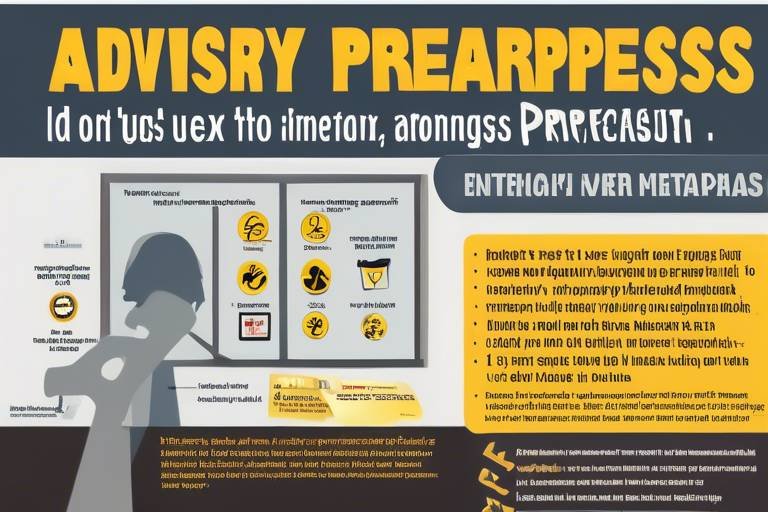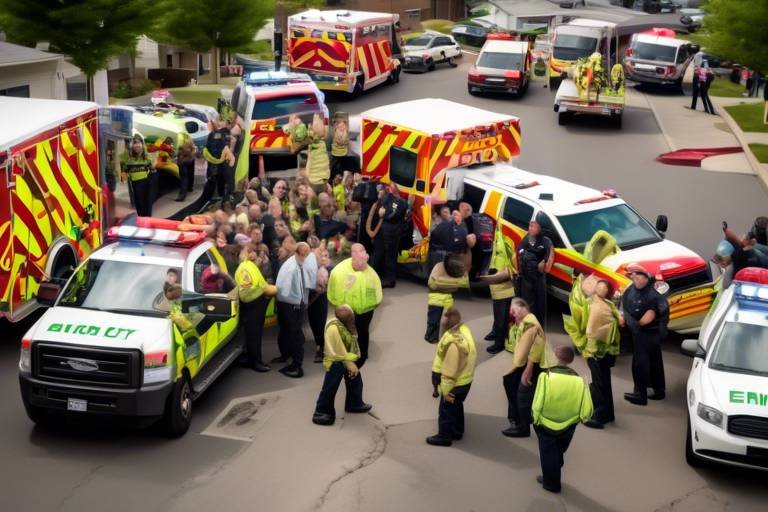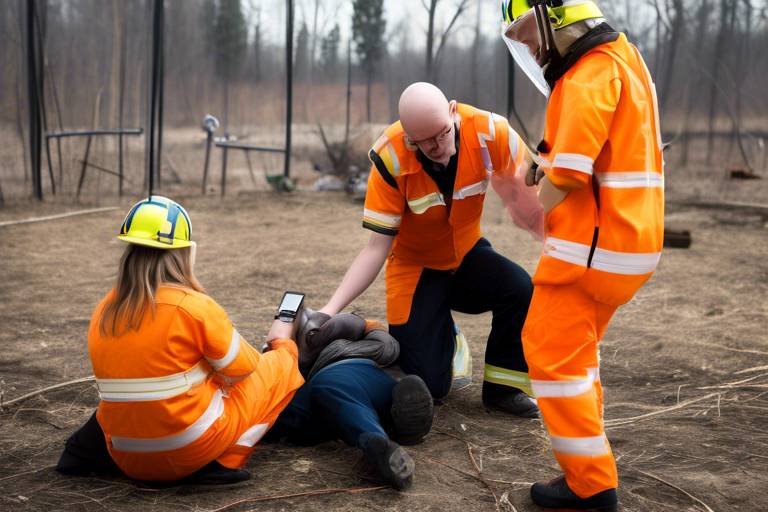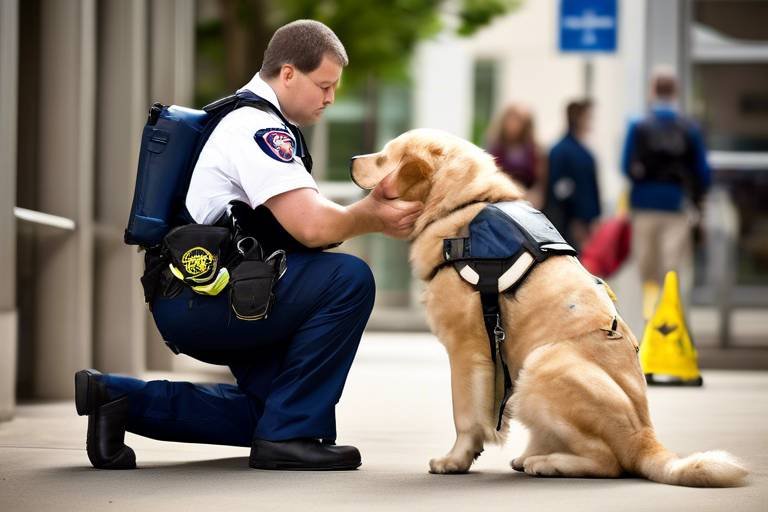How to Prepare Your Vehicle for Emergencies?
In today's fast-paced world, being prepared for emergencies is not just a luxury—it's a necessity. Imagine driving down a quiet road when suddenly, you hear that dreaded thud of a flat tire or the ominous sound of your engine sputtering. It can happen to anyone, anywhere, at any time. That’s why knowing how to prepare your vehicle for emergencies can make all the difference between a minor inconvenience and a major disaster. So, let’s dive into the essential steps and tips to ensure your vehicle is ready for unexpected situations, enhancing your safety and preparedness on the road when emergencies arise.
Emergency preparedness involves more than just having a spare tire in your trunk. It’s about planning and equipping your vehicle to handle unforeseen situations. Whether it’s a flat tire, a sudden storm, or even a natural disaster, being prepared can give you peace of mind and keep you safe. Think of your vehicle as your mobile fortress; it should be ready to protect you in any situation. This means having the right tools, supplies, and knowledge at your fingertips. By taking the time to prepare, you’re not just protecting yourself; you’re also safeguarding your loved ones who may be traveling with you.
One of the key components of emergency preparedness is having a well-stocked emergency kit in your vehicle. This kit should include a variety of items to ensure you are well-equipped during emergencies. Here’s a breakdown of must-have items:
- First-Aid Supplies: These are vital for treating minor injuries that may occur during an emergency.
- Tools and Equipment: The right tools can make a significant difference in how you handle a crisis.
- Food and Water Supplies: In case of extended emergencies, having adequate food and water is essential.
Your first-aid kit should be a mini pharmacy on wheels. It should contain essential components such as bandages, antiseptics, and other medical necessities. Think of it as your first line of defense against minor injuries. You never know when you might need to patch up a scraped knee or treat a small cut. Having these supplies can prevent a small mishap from turning into a bigger issue.
Having the right tools can make a world of difference in an emergency. Some essential tools to consider include jumper cables, tire inflators, and multi-tools. These items can help you tackle a variety of situations, from jump-starting a dead battery to fixing a flat tire. Imagine being stuck on the side of the road with a flat tire and having the tools to fix it right there in your trunk! It’s like having a superhero cape; it gives you the power to handle emergencies with confidence.
In the event of an extended emergency, having food and water can be a lifesaver. Consider packing non-perishable food items like granola bars, nuts, and canned goods, along with a reliable water storage solution. Keeping hydrated and nourished can keep your spirits up and your body functioning optimally while you wait for help or work through a situation. Remember, it’s not just about surviving; it’s about thriving, even in tough circumstances.
Regular vehicle maintenance is crucial for emergency preparedness. Think of it as giving your car a health check-up. Routine checks on tires, brakes, fluids, and other critical components can ensure your vehicle is reliable when you need it most. Just like you wouldn’t run a marathon without training, you shouldn’t hit the road without ensuring your vehicle is in top shape. A well-maintained vehicle is less likely to break down and can save you from a host of emergencies.
During emergencies, having a communication plan is vital. It’s essential to establish a reliable way to contact family and friends, ensuring everyone knows your whereabouts and safety status. Think of it as your safety net. By having a plan in place, you can reduce anxiety and ensure that help is on the way if needed.
Maintaining a list of emergency contacts is essential. This list should include family members, close friends, and roadside assistance numbers. Store this information in a place that’s easily accessible, like your phone or a printed copy in your glove compartment. In a crisis, the last thing you want to do is scramble to find a number. Having this information readily available can save precious time and reduce stress.
Technology can significantly enhance your emergency preparedness. Consider downloading mobile apps that assist with navigation, communication, and emergency alerts. These tools can provide real-time information on road conditions, weather alerts, and even nearby shelters. Think of technology as your trusty sidekick, always ready to lend a hand when things go south.
Q: What should I include in my emergency kit?
A: Your emergency kit should include first-aid supplies, tools like jumper cables, non-perishable food, water, and a flashlight with extra batteries.
Q: How often should I check my vehicle's maintenance?
A: It's best to check your vehicle's maintenance at least once a month, focusing on tires, brakes, and fluid levels.
Q: What is the best way to communicate during an emergency?
A: Establish a communication plan with family and friends, including a list of emergency contacts stored in your phone and a printed copy in your vehicle.
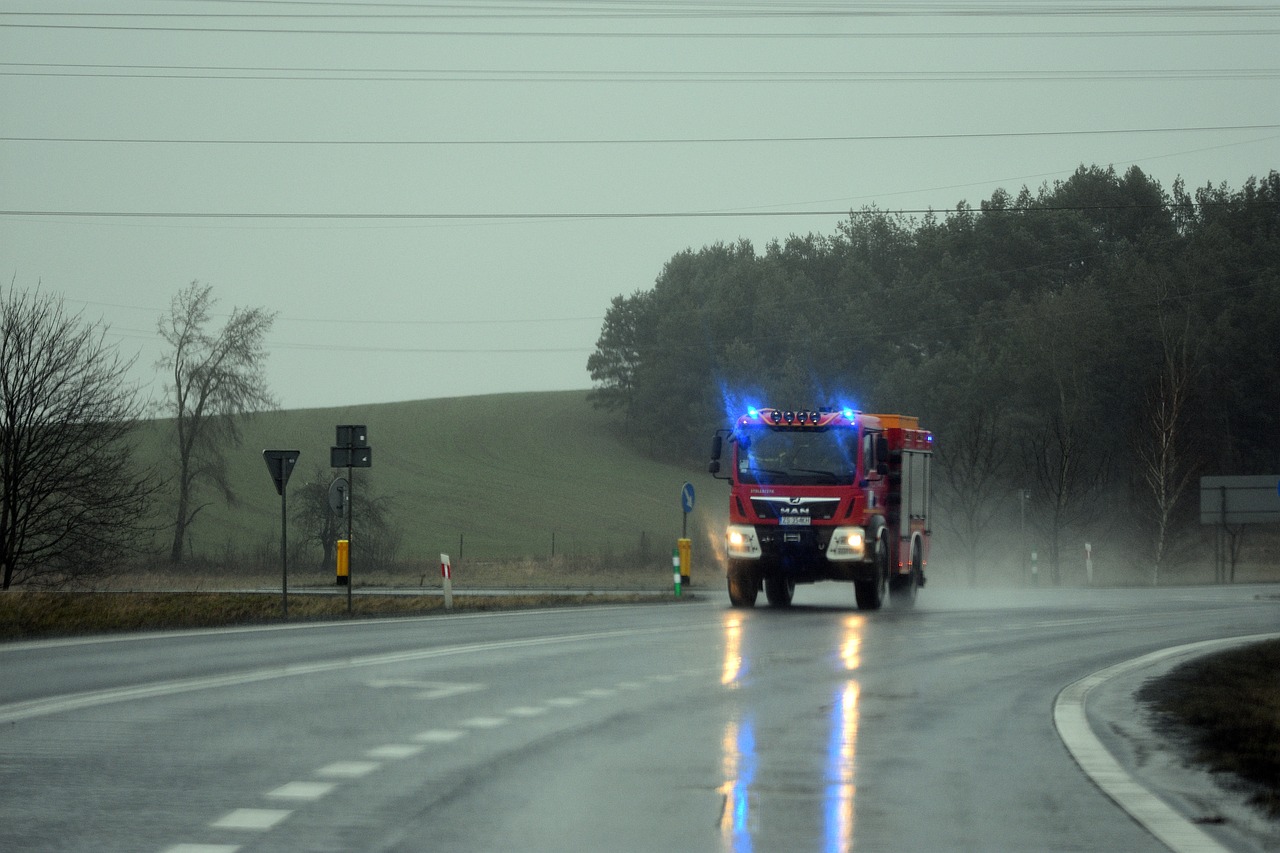
Understanding Emergency Preparedness
Emergency preparedness is more than just a buzzword; it’s a crucial aspect of being a responsible vehicle owner. Imagine cruising down the highway, music playing, when suddenly, your tire blows out or a storm rolls in. What do you do? This is where being prepared can turn a potential disaster into a manageable situation. Emergency preparedness involves not only having the right tools and supplies but also having a plan in place to tackle unexpected challenges on the road.
First and foremost, it's important to recognize that emergencies can happen at any time. Whether you're heading out for a quick grocery run or embarking on a long road trip, the possibility of an unforeseen event is always lurking. Being prepared means you can handle everything from minor inconveniences, like getting a flat tire, to more serious situations, such as being stranded in a remote area during a storm. It’s like having an insurance policy, but instead of paying premiums, you invest a little time and effort into equipping your vehicle and yourself.
When we think about emergency preparedness, we often picture a well-stocked survival kit. But it goes beyond just what’s in your trunk. It encompasses a mindset of awareness and readiness. You need to regularly assess your vehicle's condition and ensure that it’s equipped with essential items that can help you in a pinch. Here are some key elements to consider:
- Knowledge of your vehicle: Understanding how your car operates and what to do in various situations can save you a lot of stress.
- Emergency kits: Having a kit tailored to your needs can make all the difference. This includes first-aid supplies, tools, and food.
- Communication plans: Knowing who to contact and how to reach them during an emergency is vital.
In essence, being prepared means you’re not just a passive participant in your journey; you’re an active defender against the uncertainties of life on the road. Think of it like packing for a vacation—would you leave home without your essentials? Your vehicle deserves the same level of attention. By taking the time to prepare, you’re not just ensuring your safety, but also the safety of your passengers and other drivers on the road.
So, the next time you hop into your car, ask yourself: “Am I truly prepared for the unexpected?” If the answer is no, it’s time to take action. Start by assessing what you currently have and what you might need to add. Remember, preparedness is not just about having supplies; it’s about creating a safety net that allows you to enjoy your travels without unnecessary worry.
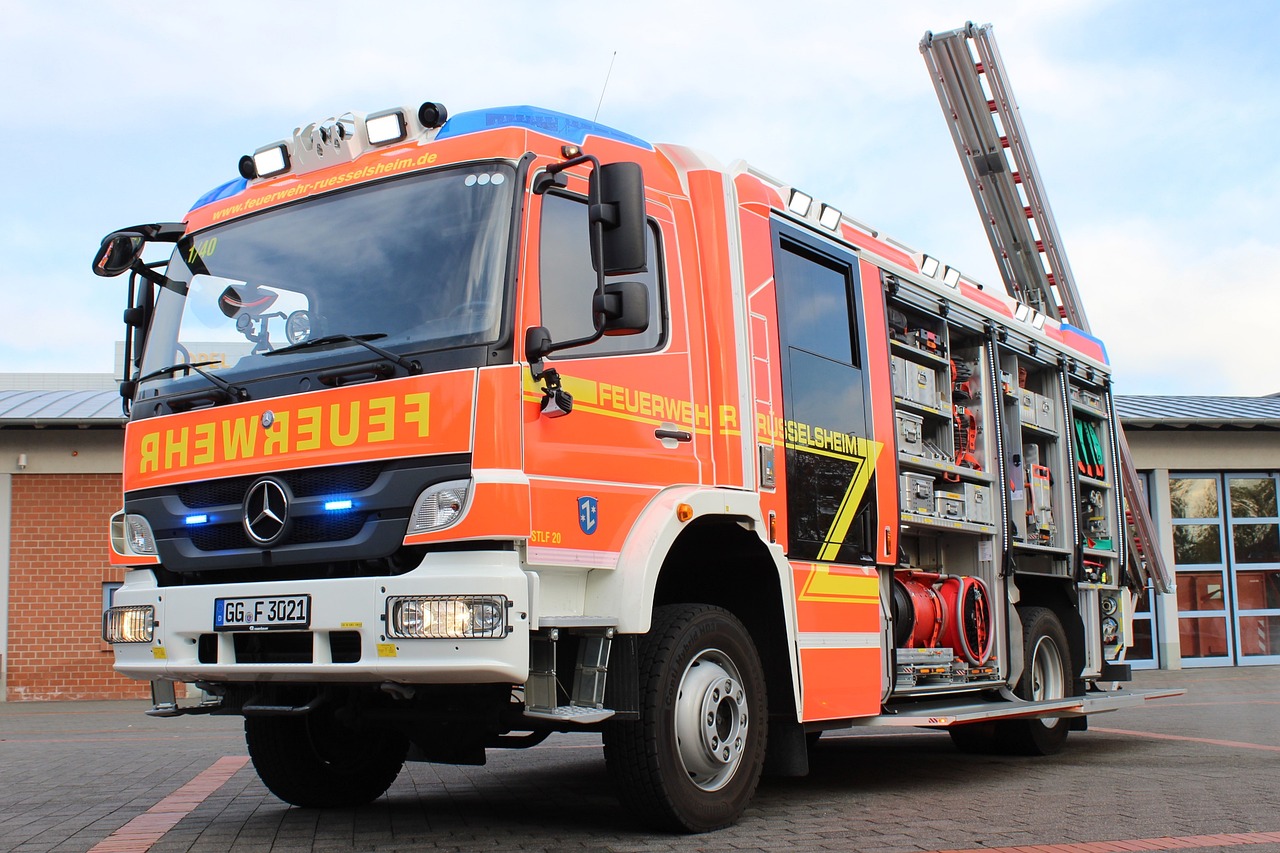
Essential Emergency Kit Items
When it comes to being prepared for emergencies on the road, having an emergency kit in your vehicle is absolutely essential. Think of it as your vehicle’s safety net, ready to catch you when unexpected situations arise. Whether you find yourself stranded on a deserted road due to a flat tire or caught in a sudden storm, the right supplies can make all the difference. So, what should you include in your emergency kit? Let’s break it down.
First and foremost, a well-stocked first-aid kit is a must-have. This kit should contain essential supplies to treat minor injuries and stabilize more serious ones until professional help can arrive. Imagine being able to patch up a cut or scrape while waiting for assistance. Your first-aid kit should include:
- Adhesive bandages of various sizes
- Antiseptic wipes or ointments
- Gauze pads and medical tape
- A pair of scissors and tweezers
- Disposable gloves
- Pain relievers, such as ibuprofen or acetaminophen
Next, let’s talk about tools and equipment. Having the right tools can turn a potential disaster into a minor inconvenience. For instance, jumper cables can help you revive a dead battery, while a tire inflator can save you from waiting for roadside assistance. Here are some tools you should consider including:
- Jumper cables
- Tire inflator or sealant
- Multi-tool or Swiss Army knife
- Flashlight with extra batteries
- Road flares or reflective triangles for visibility
Then there’s the matter of food and water supplies. In case you find yourself stuck for an extended period, having non-perishable food and water can be a lifesaver. Think about packing items like granola bars, nuts, or dried fruits, which are easy to store and provide quick energy. For water, consider a durable, refillable water container that can hold at least a couple of liters. This way, you’re not just prepared for a few hours, but you’re ready for the long haul.
Finally, it’s vital to regularly check and update your emergency kit. Just like your car needs maintenance, your emergency supplies do too. Items can expire, batteries can die, and food can go stale. Make it a habit to go through your kit every six months. This ensures that everything is in working order and ready to go when you need it the most.
By assembling a comprehensive emergency kit, you’re not just enhancing your safety; you’re also boosting your confidence on the road. After all, being prepared is half the battle. So, take the time to gather these essential items, and you’ll be ready for whatever the road throws your way!

First-Aid Supplies
When it comes to being prepared for emergencies, having a well-stocked first-aid kit in your vehicle is not just a good idea; it's essential. You never know when you might need to treat a minor injury, whether it's a scraped knee from a roadside mishap or a cut from handling equipment. A comprehensive first-aid kit can be your best friend during such unexpected moments. So, what should you include in this kit? Let's dive into the vital components that will ensure you're ready for anything.
First and foremost, your first-aid kit should contain various bandages in different sizes. These are crucial for covering cuts and abrasions. Additionally, you should have adhesive tape to secure gauze pads and bandages. Think of it this way: just like a knight needs armor to protect themselves in battle, your first-aid kit needs these basic supplies to defend against minor injuries.
Next on the list is antiseptic wipes or solution, which are essential for cleaning wounds. You wouldn't want to apply a bandage over a dirty cut, would you? Keeping the area clean is vital to prevent infections. Alongside this, include sterile gauze pads for larger wounds. These pads can absorb blood and provide a protective barrier until professional help arrives.
Another important item is a pair of scissors. You might think scissors are just for crafting, but they can be incredibly useful in emergencies. Whether you need to cut clothing away from a wound or snip adhesive tape, having a sturdy pair of scissors can save the day. And don’t forget a pair of tweezers for removing splinters or debris. Just like a surgeon needs precise tools, you need these items to handle injuries effectively.
In addition to the basics, consider adding a few other items to round out your first-aid kit. A cold pack can help reduce swelling from sprains or bruises, while a CPR face shield is crucial if you ever need to perform mouth-to-mouth resuscitation. It’s a small addition that can make a big difference in an emergency.
Finally, don’t overlook the importance of including a first-aid manual or instruction booklet. In the heat of the moment, you might forget the steps to take for specific injuries. Having a reference guide can provide clarity and ensure you’re taking the right actions.
To summarize, your first-aid kit should include:
- Bandages of various sizes
- Adhesive tape
- Antiseptic wipes or solution
- Sterile gauze pads
- Scissors
- Tweezers
- Cold pack
- CPR face shield
- First-aid manual
By ensuring your first-aid kit is stocked with these essential supplies, you can tackle minor injuries with confidence. Remember, being prepared is not just about having the right tools; it's about knowing how to use them effectively. So, take the time to organize your first-aid kit, and you'll be ready to face any bumps in the road that come your way!
Q: How often should I check my first-aid kit?
A: It's a good practice to check your first-aid kit every six months to replace expired items and ensure everything is in working order.
Q: Can I use regular household items in my first-aid kit?
A: While some household items can be useful, it's best to use items specifically designed for first-aid to ensure effectiveness and safety.
Q: Do I need a first-aid kit for long road trips only?
A: No, having a first-aid kit is essential for any time you’re on the road, regardless of the trip's length.
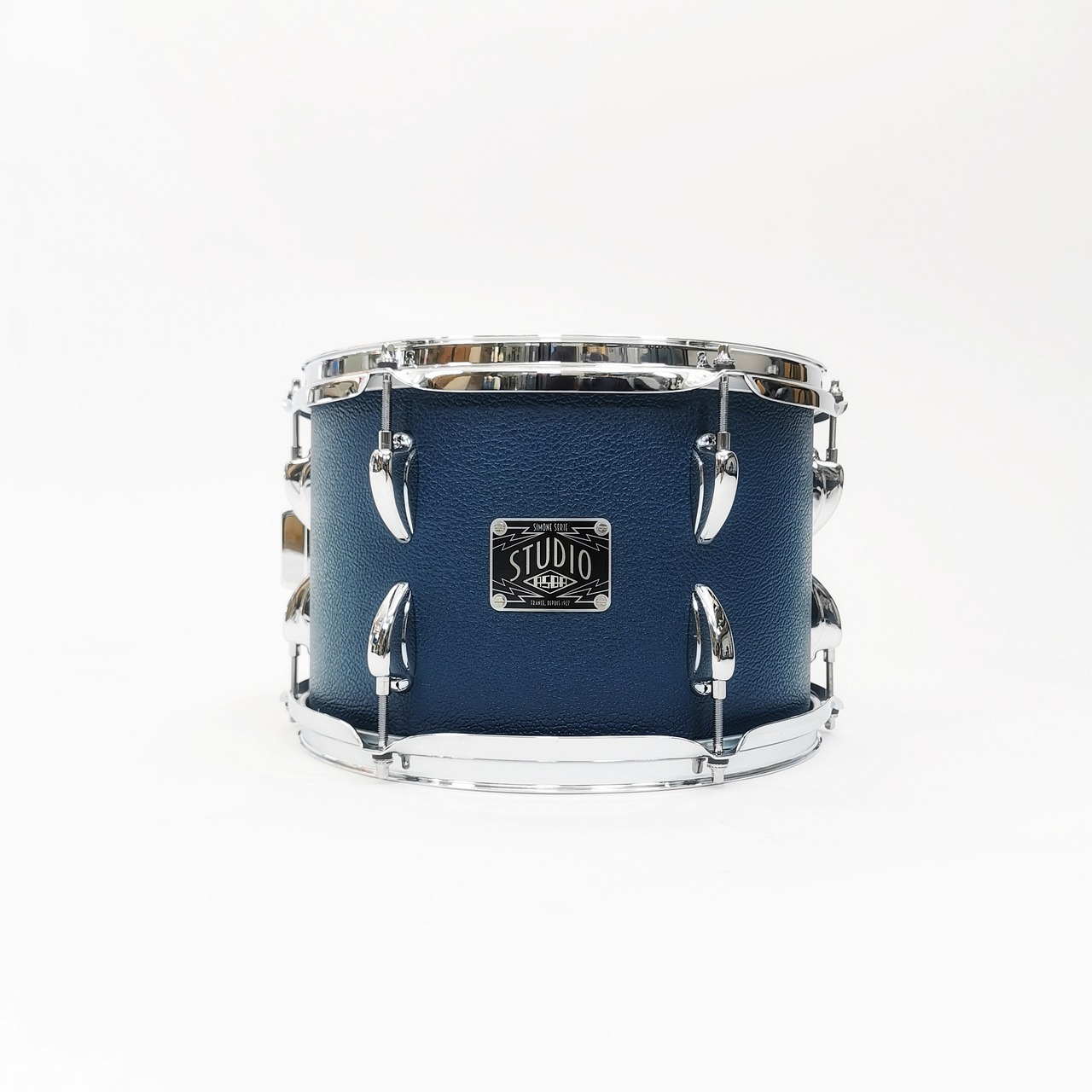
Tools and Equipment
When it comes to preparing your vehicle for emergencies, having the right can be a game-changer. Imagine being stranded on the side of the road with a flat tire and having nothing but your phone to rely on. It’s a stressful scenario, right? That’s why packing your vehicle with essential tools is not just smart; it’s vital. You want to be equipped to handle minor issues without waiting for roadside assistance, which can sometimes take ages to arrive.
So, what exactly should you have in your emergency toolkit? Let’s break it down. First off, you’ll need a set of jumper cables. These handy cables can revive a dead battery and get you back on the road in no time. Pair them with a portable battery charger for those moments when you’re parked for an extended period and forgot to switch off your headlights.
Next up, consider investing in a tire inflator. Flat tires can happen to anyone, and being able to pump some air into your tire can save you from a complete breakdown. Many modern inflators are compact and can be powered through your car’s 12V outlet, making them easy to store and use. Additionally, having a multi-tool can be invaluable. These versatile gadgets often come with pliers, screwdrivers, and even a knife, allowing you to tackle various tasks without needing a full toolbox.
Another critical piece of equipment is a flashlight. If you find yourself in a dark situation, whether it’s changing a tire at night or checking under the hood, a reliable flashlight can illuminate your work area. Opt for LED flashlights, as they last longer and are more energy-efficient. Don’t forget extra batteries or a rechargeable version!
For those who like to be extra prepared, consider keeping a first-aid kit in your vehicle as well. While it’s not a tool in the traditional sense, it’s essential for treating minor injuries that can occur during roadside repairs. A comprehensive kit should include items like band-aids, antiseptic wipes, and gauze. You never know when you might need to patch up a cut or scrape.
To give you a clearer picture, here’s a quick summary of the essential tools and equipment you should consider:
| Tool/Equipment | Purpose |
|---|---|
| Jumper Cables | To jump-start a dead battery |
| Tire Inflator | To inflate flat tires |
| Multi-tool | For various mechanical tasks |
| Flashlight | To provide light during emergencies |
| First-Aid Kit | To treat minor injuries |
In conclusion, having the right tools and equipment in your vehicle can significantly enhance your readiness for emergencies. It’s about being proactive rather than reactive. Think of it like packing an umbrella on a cloudy day; you might not need it, but if the storm hits, you’ll be glad you have it. So, take the time to gather these essentials and store them in your vehicle. You never know when they might come in handy!
- What should I include in my emergency kit?
Include items like first-aid supplies, jumper cables, a tire inflator, a flashlight, and non-perishable food and water. - How often should I check my emergency supplies?
It's a good idea to check your emergency supplies every six months to ensure everything is in working order and not expired. - Can I use my phone for emergency tools?
Yes, there are mobile apps that can assist with navigation, emergency alerts, and even provide flashlight functionality.
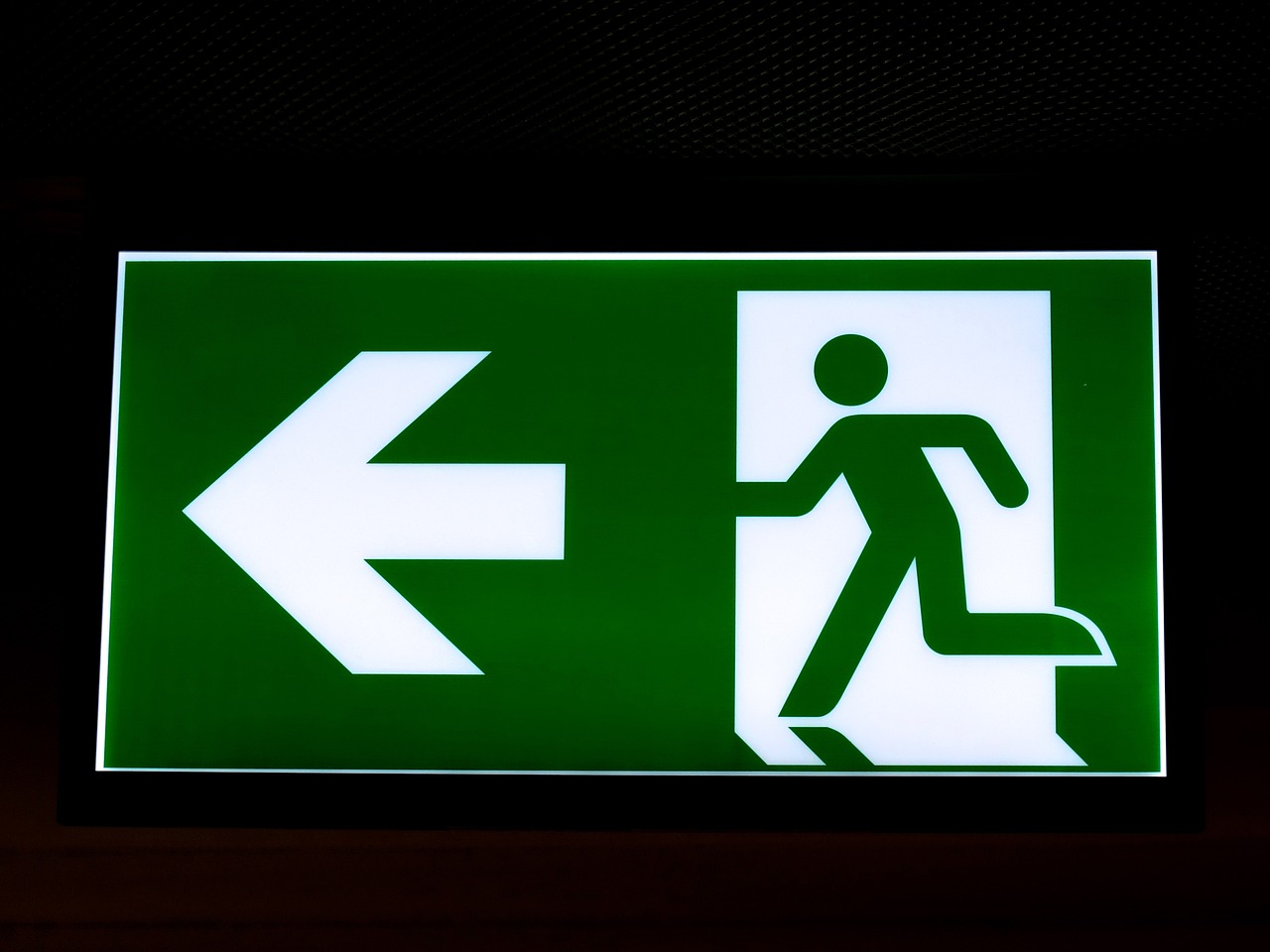
Food and Water Supplies
When it comes to preparing your vehicle for emergencies, one of the most crucial aspects is ensuring you have adequate . Imagine being stuck on the side of the road due to a flat tire or an unexpected breakdown, and the hours stretch on with no sign of help. In such situations, having a stash of non-perishable food and clean drinking water can be a game changer. It's not just about survival; it's about maintaining your energy and morale until help arrives.
First things first, let's talk about water. The general guideline is to have at least one gallon of water per person per day. This may seem excessive, but in an emergency, you might need it for drinking, cooking, or even washing wounds. Storing water in durable, leak-proof containers is essential. You can also consider using water purification tablets or filters in case you need to source water from less-than-ideal locations. It's a good idea to check your water supply every six months to ensure it remains fresh and safe to consume.
Now, onto food. You want to pack items that are not only non-perishable but also nutritious and easy to consume. Think about energy-dense snacks that can keep your spirits up during stressful situations. Here are some excellent options to consider:
- Granola bars: These are compact, tasty, and packed with energy.
- Trail mix: A combination of nuts, dried fruits, and chocolate can provide a quick energy boost.
- Canned goods: Items like beans, vegetables, and fruits can be very handy. Just remember to include a can opener!
- Jerky: A great source of protein that doesn't require refrigeration.
It's also wise to think about dietary restrictions. If you or your passengers have allergies or specific dietary needs, make sure to include suitable options. For instance, gluten-free snacks or low-sugar alternatives can be essential for those with specific health concerns.
Lastly, don't forget to rotate your supplies regularly. Just like any other emergency kit item, food and water can expire or become less effective over time. A good rule of thumb is to replace your food supplies every six months and to check the expiration dates on water containers. Keeping your emergency supplies fresh isn't just a good practice; it can make all the difference when you need them most.
In conclusion, having a well-thought-out supply of food and water can significantly enhance your vehicle's emergency preparedness. It’s not just about having the essentials; it’s about being ready for anything life throws your way. So, take a moment to assess your supplies today—you never know when you might need them!

Vehicle Maintenance Checks
When it comes to being prepared for emergencies on the road, cannot be overlooked. Think of your vehicle as your trusty steed; if it’s not in top shape, it might not carry you through the storm. Regular maintenance ensures that your vehicle is reliable and safe, especially when unexpected situations arise. Just like you wouldn’t want to run a marathon without proper training, you shouldn’t hit the road without ensuring your vehicle is ready for the journey ahead.
So, what should you be checking? Let’s break it down into a few critical components that deserve your attention:
- Tires: These are your vehicle's only contact with the road, so make sure they are in good condition. Check for proper inflation, tread depth, and any signs of wear or damage. A flat or blown tire can leave you stranded in an emergency.
- Brakes: Your brakes are essential for your safety. Regularly inspect the brake pads and fluid levels. If you hear any unusual noises or feel a difference in braking performance, it’s time for a check-up.
- Fluids: Engine oil, coolant, brake fluid, and transmission fluid are vital for your vehicle’s operation. Regularly check these levels and top them off as needed. A vehicle running low on fluids is like a person running on empty—eventually, it will stall.
- Battery: A dead battery can be a major inconvenience, especially during emergencies. Check the battery terminals for corrosion and ensure the battery is holding a charge. If your battery is over three years old, consider having it tested.
- Lights: Ensure all your lights are functioning, including headlights, brake lights, and turn signals. In an emergency, visibility is crucial, and you want to be seen by other drivers.
To make it easier for you, consider creating a vehicle maintenance checklist that you can follow regularly. This checklist can include the items mentioned above, along with the frequency of checks. For example, you might check your tire pressure monthly, while fluid levels could be checked every few weeks. Keeping a record of these checks can help you stay organized and proactive.
Here’s a simple example of what your checklist might look like:
| Maintenance Item | Frequency | Last Checked |
|---|---|---|
| Tire Pressure | Monthly | 01/10/2023 |
| Brake Fluid | Every 3 months | 01/07/2023 |
| Battery Condition | Every 6 months | 01/01/2023 |
| Oil Change | Every 5,000 miles | 01/10/2023 |
By staying on top of these checks, you not only enhance your vehicle's reliability but also your peace of mind. After all, when you’re out there on the road, you want to feel confident that your vehicle won’t let you down. Remember, a little proactive maintenance can go a long way in keeping you safe and prepared for whatever life throws your way!
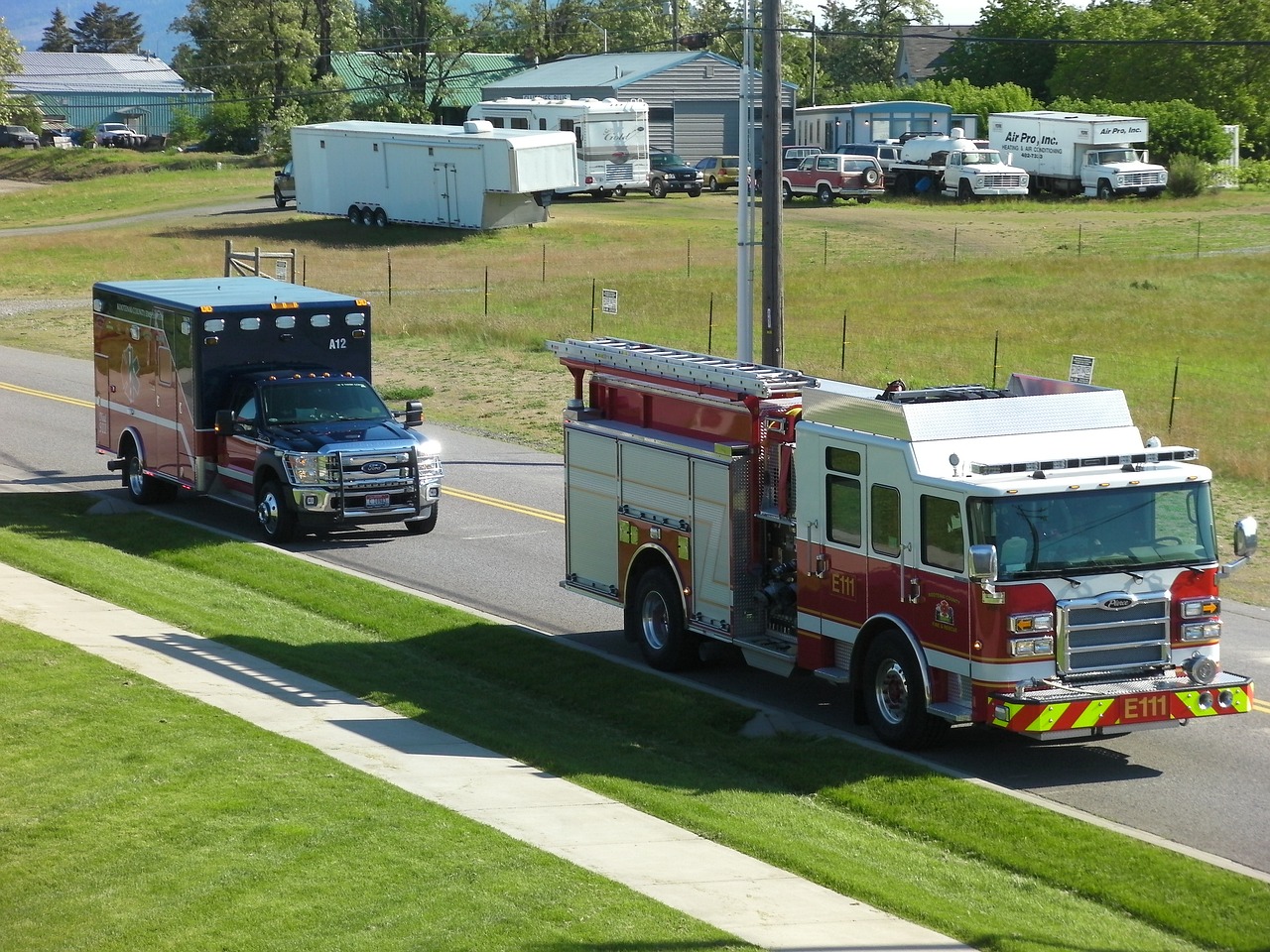
Creating a Communication Plan
When it comes to emergencies, having a solid communication plan can be your lifeline. Imagine being stranded on a deserted road with no way to contact anyone; it’s a scenario that can send shivers down anyone's spine. That's why it's crucial to establish a reliable method of communication before you hit the road. A good communication plan not only keeps you connected with family and friends but also ensures that someone knows your whereabouts in case something goes wrong.
Start by identifying the people you need to stay in touch with during an emergency. This could include family members, close friends, or even neighbors. Make a list of these emergency contacts and store their information in a place that’s easily accessible. You can keep this list in your glove compartment or even on your smartphone. Here’s a simple table to illustrate how you can organize this information:
| Name | Relationship | Phone Number | Alternate Contact Method |
|---|---|---|---|
| John Doe | Brother | (123) 456-7890 | Email: johndoe@example.com |
| Jane Smith | Best Friend | (098) 765-4321 | Text: jane.smith@example.com |
Next, consider how you will communicate in various scenarios. Will you rely solely on your cell phone? What if the battery dies or you find yourself in an area with no signal? It’s wise to have a backup plan. For instance, you might want to look into walkie-talkies or a satellite phone for remote areas. Additionally, make sure to inform your contacts about your travel plans, including your expected route and arrival times. This way, they’ll know when to worry if they don’t hear from you.
In this digital age, technology can be a great ally. There are numerous mobile apps designed for emergency situations. For example, apps like Find My Friends or Life360 allow you to share your location with trusted contacts. This feature can be particularly useful if you’re traveling alone or in unfamiliar territory. However, always remember that technology can fail, so it’s crucial to have a plan that doesn’t rely solely on it.
Lastly, be sure to practice your communication plan. Just like a fire drill, knowing what to do in an emergency can save valuable time and reduce panic. Regularly review your contacts and update any information as necessary. This preparation can make all the difference when the unexpected happens. So, are you ready to create your own communication plan? The peace of mind that comes with being prepared is well worth the effort!
Q: What should I do if my phone dies during an emergency?
A: If your phone dies, try to find a way to charge it, such as using a portable charger or finding a nearby location with power. If that's not possible, use alternative communication methods like walkie-talkies or ask for help from passersby.
Q: How often should I update my emergency contact list?
A: It's a good idea to review and update your emergency contact list at least once every few months or whenever there are significant changes in your life, such as moving or changing jobs.
Q: Are there any apps specifically for emergency communication?
A: Yes, apps like Red Cross Emergency, Life360, and Find My Friends can help you stay connected and informed during emergencies.
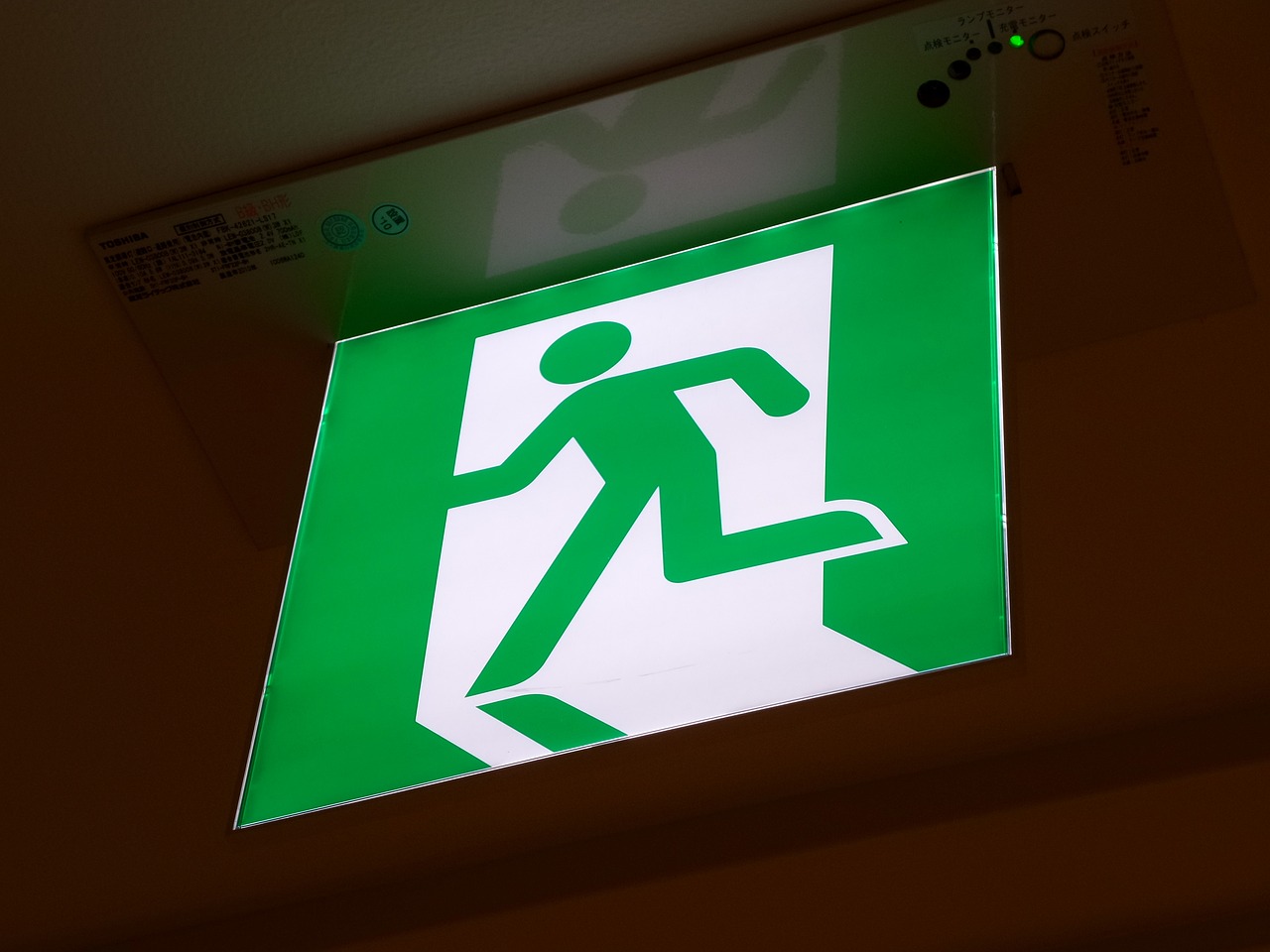
Emergency Contacts
When it comes to being prepared for emergencies, having a reliable list of emergency contacts can make all the difference. Imagine being stranded on the side of the road or caught in an unexpected situation without a way to communicate with your loved ones. It’s a scenario no one wants to face, which is why maintaining an updated list of contacts is essential. This list should include not only family and friends but also relevant services that can assist you in various emergencies.
Start by including your immediate family members, as they are often the first people you would want to reach out to in a crisis. But don't stop there! Think about including:
- Your spouse or partner
- Parents and siblings
- Close friends who live nearby
- Neighbors who can lend a hand
- Work colleagues, especially if you travel for work
Next, consider adding essential services to your list. These could include:
- Local police and fire department numbers
- Emergency roadside assistance services
- Your insurance company's contact information
- Local hospitals or urgent care facilities
It's crucial to store this information in a way that you can access it easily during an emergency. You might want to keep a physical copy in your glove compartment, but don't forget about digital options! Most smartphones allow you to create a notes app or a contact group specifically for emergency contacts. This way, you can quickly pull up the information when you need it most.
Moreover, consider setting up a group chat or a messaging app with your emergency contacts. This can be a quick way to inform multiple people about your situation without having to make individual calls. Just remember to keep the group updated if anyone changes their phone number or if a new contact needs to be added.
In summary, creating and maintaining an updated list of emergency contacts is a simple yet effective step in your overall emergency preparedness plan. It’s one of those small actions that can yield significant peace of mind, ensuring that you’re never truly alone, no matter what the road throws your way.
1. Why is it important to have emergency contacts?
Having emergency contacts ensures that you can reach out for help quickly when needed. Whether you're in a car accident or facing a breakdown, these contacts can assist you or notify others.
2. What information should I include in my emergency contacts list?
Your emergency contacts list should include names, phone numbers, and relationships of family, friends, and essential services like police, hospitals, and roadside assistance.
3. How often should I update my emergency contacts?
It's a good practice to review and update your emergency contacts at least once a year or whenever there are significant changes in your life, such as moving or changing jobs.
4. Is it safe to store emergency contacts on my phone?
Yes, storing emergency contacts on your phone is safe and convenient. Just ensure that your phone is password-protected to keep your information secure.

Using Technology for Safety
In today's fast-paced world, technology plays an essential role in enhancing our safety, especially when it comes to emergencies on the road. Imagine driving down a quiet highway and suddenly realizing you're lost or your vehicle has broken down. The good news is that your smartphone can be your best friend in such situations! With the right apps and tools, you can turn a potentially stressful experience into a manageable one.
First off, let’s talk about navigation apps. Services like Google Maps and Waze not only help you find your way but also provide real-time traffic updates. This means you can avoid congested areas or even accidents, keeping your journey smooth and safe. But what if you find yourself in an area with no cell service? That’s where offline maps come in handy. Downloading maps ahead of time can be a lifesaver when the signal drops.
Next, consider emergency alert apps. Apps like Life360 or Red Panic Button allow you to send your location and status to family or friends at the push of a button. This can be incredibly reassuring if you find yourself in a precarious situation. Just think about it: with one simple tap, your loved ones can know where you are and that you need help. It’s like having a safety net right in your pocket!
Additionally, there are specialized apps designed for roadside assistance. Services such as AAA and Urgent.ly provide quick access to help when you need it most. Whether you have a flat tire or your car won’t start, these apps can connect you with a nearby service provider, often with just a few taps. It’s like having a personal assistant ready to spring into action at a moment’s notice.
Moreover, don’t overlook the importance of vehicle maintenance apps. Apps like Car Minder or My Car provide reminders for oil changes, tire rotations, and other essential maintenance tasks. Keeping your vehicle in top shape can prevent many emergencies before they even happen. Think of it as having a personal mechanic who reminds you when it’s time to take care of your car!
Incorporating technology into your emergency preparedness plan is not just smart; it’s essential. By leveraging these tools, you can enhance your safety and confidence on the road. So, the next time you hit the road, make sure your device is equipped with the right apps. After all, being prepared means being empowered, and technology is a powerful ally in ensuring your safety.
- What should I do if my phone battery dies during an emergency?
Always carry a portable charger in your vehicle. It can recharge your phone when you need it the most. - Are there any free apps for emergency preparedness?
Yes! Many apps like Google Maps and Red Panic Button are free and offer essential features for emergency situations. - How can I ensure my vehicle’s technology is up to date?
Regularly check for software updates for your vehicle’s built-in systems and apps on your smartphone.
Frequently Asked Questions
- What should I include in my vehicle's emergency kit?
Your vehicle's emergency kit should include essential items like a first-aid kit, jumper cables, a tire inflator, non-perishable food, bottled water, a flashlight, and basic tools. Having these items can make a significant difference during unexpected situations.
- How often should I check my vehicle for maintenance?
It's recommended to perform routine maintenance checks at least once a month. This includes inspecting your tires, brakes, fluids, and other critical components to ensure your vehicle is in good working order and ready for emergencies.
- What types of food are best for an emergency kit?
Non-perishable food items are ideal for an emergency kit. Consider including energy bars, canned goods, dried fruits, and nuts. These options provide essential nutrients and can be stored for long periods without spoiling.
- How can I create a communication plan for emergencies?
To create a communication plan, identify key contacts and ensure everyone knows how to reach each other in case of an emergency. Share your travel routes and expected arrival times with family and friends, and consider using group messaging apps for quick updates.
- Are there any mobile apps that can help during emergencies?
Yes! There are several mobile apps designed for emergency preparedness, such as weather alerts, navigation tools, and emergency contact apps. Some popular options include Red Cross emergency apps, Waze for navigation, and local emergency alert systems.
- What should I do if I get stranded on the road?
If you find yourself stranded, stay calm and assess your situation. Use your phone to call for help if you have signal. If not, stay with your vehicle for safety, turn on your hazard lights, and use your emergency kit to stay warm and nourished until help arrives.











